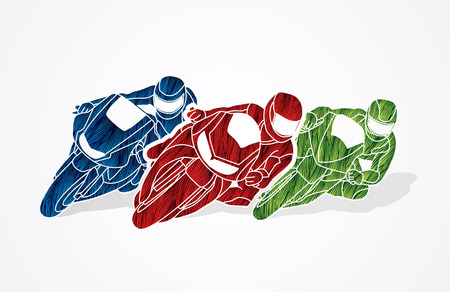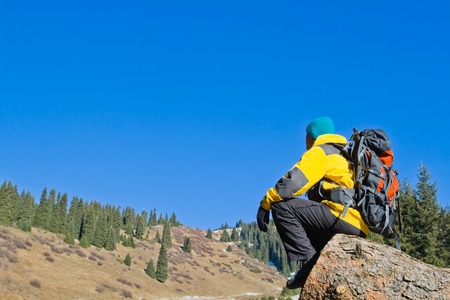1. Dreams and Preparations: Why Hike the PCT?
The Pacific Crest Trail, or PCT, stretches over 2,650 miles from Mexico to Canada, winding through California, Oregon, and Washington. For many Americans, this legendary trail is more than just a path through the wild—it’s a symbol of freedom, adventure, and personal discovery. But what drives people to leave behind the comfort of their daily lives and take on such a massive challenge?
The Call of Adventure
America has always had a deep love affair with the great outdoors. The PCT calls to those who yearn for adventure and wide-open spaces. For some, it’s about escaping the hustle and bustle of city life; for others, it’s about pushing limits or finding peace in nature’s quiet moments. Hiking the PCT offers a rare chance to disconnect from screens and schedules and reconnect with the land.
Main Reasons People Hike the PCT
| Reason | Description |
|---|---|
| Adventure | Seeking excitement and new experiences in the wild |
| Personal Growth | Challenging oneself physically and mentally for self-discovery |
| Healing & Reflection | Finding space to heal from loss, stress, or big life changes |
| Love for Nature | Experiencing America’s stunning landscapes up close |
| Community | Connecting with like-minded hikers and forming lifelong friendships |
Mental Shifts and Preparation
Tackling the PCT isn’t just about lacing up your boots. The journey begins long before you set foot on the trail. It takes months—sometimes years—of planning. Permits must be secured, gear carefully chosen, resupply boxes packed, and physical conditioning started early.
Key Steps in Preparing for the PCT:
- Research: Studying maps, guidebooks, weather patterns, and potential hazards along the route.
- Physical Training: Building endurance with regular hikes, strength training, and cardio workouts.
- Gear Selection: Choosing lightweight equipment that balances comfort and necessity.
- Mental Readiness: Developing resilience to handle tough days, loneliness, or unexpected setbacks.
- Logistics: Planning mail drops for food resupply and organizing transportation to trailheads.
The Pacific Crest Trail is an enormous undertaking that transforms dreams into reality. Those who dare to take the first step are not only seeking adventure—they’re embracing a uniquely American journey toward overcoming the impossible.
2. Hitting the Trail: Facing the Elements
Setting foot on the Pacific Crest Trail (PCT) for the first time is like stepping into a whole new world. For many hikers, the first days are a true test of grit and adaptability. The trail starts in Southern California, where unpredictable weather and challenging terrain quickly remind you that nature is in charge.
Desert Days: Sun, Sand, and Survival
The opening miles of the PCT wind through the California desert. Here, hikers face blazing sun by day and surprisingly cold temperatures at night. Water sources can be scarce, so careful planning is essential. Many hikers talk about their first “water carry,” when they have to haul several liters of water over long, dry stretches. The reality of the desert is humbling—even seasoned backpackers find themselves adapting quickly to conserve energy and protect themselves from heat exhaustion.
| Challenge | Real Hiker Experience | Adaptation |
|---|---|---|
| Extreme Heat | “I started hiking before sunrise to beat the heat.” | Early starts, wide-brim hats, sunscreen |
| Lack of Water | “I learned to ration every drop and read my map for hidden springs.” | Planning water stops, carrying extra bottles |
| Physical Fatigue | “My legs burned after just ten miles—way harder than I thought.” | Pacing oneself, taking frequent breaks |
| Mental Hurdles | “The endless sand tested my patience more than anything.” | Mantras, trail community encouragement |
Battling Unpredictable Weather
The California section is notorious for its sudden weather changes. One moment you might be sweating under a cloudless sky; the next, a chilly wind whips down from the mountains. Some hikers recall getting caught in unexpected spring storms or being pelted by hail out of nowhere. Adapting means keeping rain gear handy and never underestimating Mother Nature.
The American Wilderness Ethic: Respect and Resilience
Adapting to these early challenges reflects a core part of American outdoor culture—the wilderness ethic. This means respecting nature’s power while believing in one’s own ability to push through adversity. Real PCT hikers often talk about these moments as turning points when they discovered what they were truly capable of—physically and mentally.
Personal Triumphs in the Wild
Sara from Oregon remembers her second day on trail: “My tent blew over in a surprise windstorm at midnight. I was cold, tired, and scared. But I fixed it, crawled back in, and made it through till morning.” Stories like Sara’s echo up and down the PCT—each one proving that overcoming the impossible starts with facing each day’s wild surprises head-on.

3. Trail Family: Camaraderie and Kindness
Walking the Pacific Crest Trail (PCT) isn’t just about testing your limits against nature—it’s about discovering the true meaning of community. Out on the trail, hikers quickly learn that they are never alone, even when miles from civilization. This unique sense of togetherness is at the heart of what many call their “trail family,” or “tramily.” These are the friends you meet along the way, bonded by shared struggles, laughter, and a collective spirit of perseverance.
Fellow Thru-Hikers: Strangers to Friends
Every hiker starts out as a stranger, but the PCT has a magical way of turning strangers into lifelong friends. Whether it’s sharing a meal at a campsite or lending a helping hand after a long day, everyone looks out for each other. People from all walks of life come together, united by one goal: to reach Canada (or Mexico), step by step.
Trail Angels: The Heartbeat of Kindness
One of the most heartwarming parts of PCT culture is meeting “trail angels”—local folks who go out of their way to help hikers. They offer rides into town, cold drinks at remote trailheads, or even a cozy bed for a night. These small acts of kindness can make all the difference when you’re tired and sore. It’s not uncommon to hear hikers say that trail angels restored their faith in humanity.
Examples of Trail Kindness
| Type of Support | Description | Common Example |
|---|---|---|
| Trail Magic | Unexpected treats or support left for hikers | Coolers filled with sodas, snacks under a tree |
| Rides & Hospitality | Helping hikers get to towns or offering shelter | Offering rides, backyard camping spots, warm showers |
| Advice & Guidance | Sharing tips, maps, and encouragement | Locals giving directions, experienced hikers sharing stories |
The bonds formed on the PCT reflect core American values—community, resilience, and generosity. People help each other because everyone knows how tough the journey can be. At every mile marker and mountain pass, hikers celebrate each other’s victories big and small. It’s these moments of kindness and camaraderie that turn an epic hike into something even greater—a shared adventure built on trust and friendship.
4. Overcoming Setbacks: Resilience in the Wild
On the Pacific Crest Trail, every hiker faces moments when things don’t go as planned. From twisted ankles to sudden storms, these unexpected challenges test not only your body but also your spirit. It’s not just about walking from Mexico to Canada—it’s about learning how to push through setbacks and discover what you’re truly made of.
Real Challenges Hikers Face
Let’s take a look at some of the most common hurdles on the trail, along with real stories from hikers who found ways to persevere:
| Challenge | Real-Life Example | How They Overcame It |
|---|---|---|
| Injury | Sarah twisted her ankle in the Sierra Nevada. For days, she hobbled along, unsure if she could continue. | She took extra rest days, used trekking poles for support, and let fellow hikers help carry some of her gear until she healed. |
| Homesickness | Mike missed his family terribly after three weeks on the trail. He thought about quitting every night. | He started journaling and calling home during town stops. Sharing his feelings with other hikers helped him realize he wasn’t alone. |
| Wildlife Encounters | Jess ran into a black bear near her camp. She froze with fear, unsure what to do next. | She remembered her training—made noise, backed away slowly, and didn’t panic. The bear left, and Jess gained new confidence in handling wildlife. |
| Savage Weather | Cody was caught in an unexpected snowstorm in Washington. His gear was soaked, and he worried about hypothermia. | He set up shelter quickly, changed into dry clothes, and waited out the storm with hot food and positive thinking. The experience made him more prepared for the next challenge. |
The Power of Perseverance
No matter what comes their way, successful PCT hikers share one thing: grit. When faced with setbacks, they find creative solutions, lean on each other for support, and never lose sight of their goal. Every struggle becomes a lesson—and every lesson turns into a personal victory.
Tapping Into Inner Strength
Pushing past tough moments on the Pacific Crest Trail often reveals strengths hikers never knew they had. Whether it’s conquering fear after a close encounter with wildlife or finding hope on a lonely stretch of trail, these experiences shape hikers forever.
5. Reaching the Finish: Lessons for Life
The Final Miles to Canada
The last stretch of the Pacific Crest Trail is a test of both grit and heart. After months on the trail, every step toward the Canadian border feels heavier and more meaningful. Hikers push through tired legs, unpredictable weather, and emotional highs and lows. The anticipation builds with each mile marker, reminding you that you’re about to finish something truly extraordinary.
The Emotional Surge
Crossing into Washington brings a mix of excitement and anxiety. Many hikers describe this section as both beautiful and brutal. When the border finally comes into view, emotions often overflow—relief, pride, disbelief, and sometimes even sadness that the journey is ending. This surge isn’t just physical; it’s an emotional release that stays with you long after you hang up your hiking boots.
How the PCT Changes You
| Before the PCT | After the PCT |
|---|---|
| Self-doubt about big challenges | Confidence in overcoming obstacles |
| Routine daily life | A sense of adventure in everyday moments |
| Limited connection to nature | Deep respect for wild places |
| Uncertainty about personal limits | Pride in tested endurance and spirit |
A Lasting American Adventure Spirit
The Pacific Crest Trail is more than just a hike—it’s a celebration of American wilderness and determination. Along the way, you become part of a unique tradition: chasing big dreams across vast landscapes. The lessons learned on the trail—resilience, resourcefulness, camaraderie—carry over into all parts of life. Many hikers return home with a new outlook, ready to take on whatever comes next, inspired by their own impossible journey made possible.


